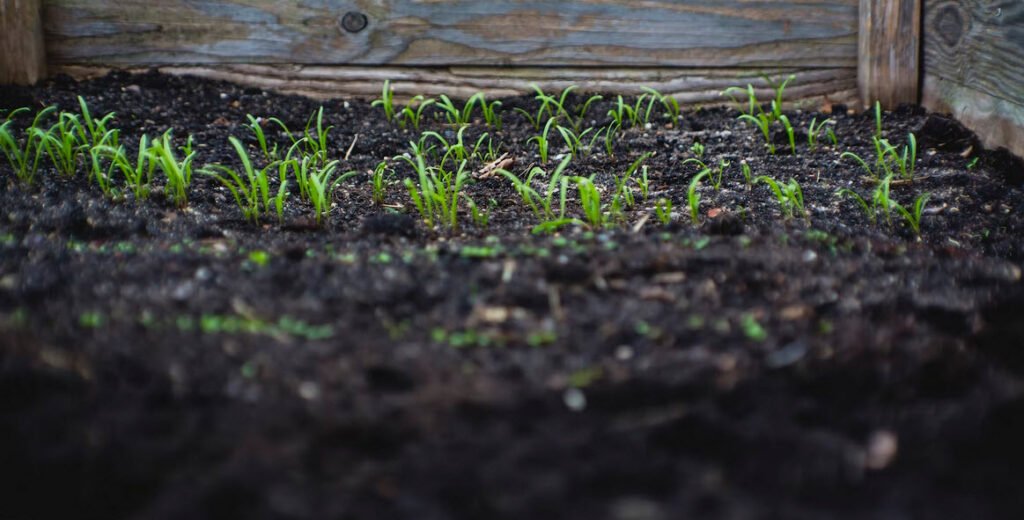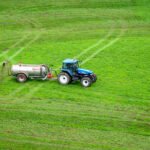Organic and Commercial Fertilizers and Returning Nutrients to Your Soil. Once you have the results of the soil test, you can add nutrients or soil amendments as needed to alter the pH.
If you need to raise the soil’s pH, use lime. Lime is most effective when it is mixed into the soil; therefore, it is best to apply before planting (if you apply lime in the fall, it has a better chance of correcting any soil acidity problems for the next growing season). For large areas, rototilling is most effective.
For small areas or around plants, working the lime into the soil with a spade or cultivator is preferable. When working around plants, be careful not to dig too deeply or roughly so that you damage plant roots. Depending on the form of lime and the soil conditions, the change in pH may be gradual.
It may take several months before a significant change is noted. Soils high in organic matter and clay tend to take larger amounts of lime to change the pH than do sandy soils. If you need to lower the pH significantly, especially for plants such as rhododendrons, you can use aluminum sulfate. In all cases, follow the soil test or manufacturer’s recommended rates of application. Again, mixing well into the soil is recommended.
– After rototilling or mixing in the fertilizer with a spade, you may wish to rake out the soil to make it smooth and well aerated. There are numerous choices for providing nitrogen, phosphorus, and potassium, the nutrients your plants need to thrive.
Nitrogen (N) is needed for healthy, green growth and regulation of other nutrients. Phosphorus (P) helps roots and seeds properly develop and resist disease.
Potassium (K) is also important in root development and disease resistance. If your soil is of adequate fertility, applying compost may be the best method of introducing additional nutrients.
While compost is relatively low in nutrients compared to commercial fertilizers, it is especially beneficial in improving the condition of the soil and is nontoxic.
By keeping the soil loose, compost allows plant roots to grow well throughout the soil, helping them to extract nutrients from a larger area. A loose soil enriched with compost is also an excellent habitat for earthworms and other beneficial soil microorganisms that are essential for releasing nutrients for plant use.
The nutrients from compost are also released slowly, so there is no concern about “burning” the plant with an over-application of synthetic fertilizer.
Manure is also an excellent source of plant nutrients and is an organic matter. Manure should be composted before applying, as fresh manure may be too strong and can injure plants.
Be careful when composting manure. If left in the open, exposed to rain, nutrients may leach out of the manure and the runoff can contaminate nearby waterways. Store the manure away from wells and any waterways and make sure that any runoff is confined or slowly released into a vegetated area.
Improperly applied manure also can be a source of pollution. If you are not composting your own manure, you can purchase some at your local garden store. For best results, work composted manure into the soil around the plants or in your garden before planting.
– For potted plants, you can apply fertilizer around the edge of the pot if needed, but try to avoid direct contact between the plant’s roots, leaves, or stem and the fertilizer.
If preparing a bed before planting, compost and manure may be worked into the soil to a depth of 8 to 12 inches. If adding to existing plants, work carefully around the plants so as not to harm the existing roots.
Green manures are another source of organic matter and plant nutrients. Green manures are crops that are grown and then tilled into the soil. As they break down, nitrogen and other plant nutrients become available.
These manures may also provide additional benefits of reducing soil erosion. Green manures, such as rye and oats, are often planted in the fall after the crops have been harvested. In the spring, these are tilled under before planting.
With all organic sources of nitrogen, whether compost or manure, the nitrogen must be changed to an inorganic form before the plants can use it. Therefore, it is important to have well-drained, aerated soils that provide the favorable habitat for the soil microorganisms responsible for these conversions.
There are also numerous sources of commercial fertilizers that supply nitrogen, phosphorus, and potassium, though it is preferable to use organic fertilizers, such as compost and manures. However, if you choose to use a commercial fertilizer, it is important to know how to read the amount of nutrients contained in each bag.
The first number on the fertilizer analysis is the percentage of nitrogen; the second number is phosphorus; and the third number is the potassium content. A fertilizer that has a 10-20-10 analysis contains twice as much of each of the nutrients as a 5-10-5.
How much of each nutrient you need depends on your soil test results and the plants you are fertilizing.
As you already know, nitrogen stimulates vegetative growth while phosphorus stimulates flowering. Too much nitrogen can inhibit flowering and fruit production. For many flowers and vegetables, a fertilizer higher in phosphorus than nitrogen is preferred, such as a 5-10-5. For lawns, nitrogen is usually required in greater amounts, so a fertilizer with a greater amount of nitrogen is more beneficial.
| Soil Test Reading | What to Do |
| High pH | Your soil is alkaline. To lower pH, add elemental sulfur, gypsum, or cottonseed meal. Sulfur can take several months to lower your soil’s pH, as it must first convert to sulfuric acid with the help of the soil’s bacteria. |
| Low pH | Your soil is too acidic. Add lime or wood ashes. |
| Low nitrogen | Add manure, horn or hoof meal, cottonseed meal, fish meal, or dried blood. |
| High nitrogen | Your soil may be over-fertilized. Water the soil frequently and don’t add any fertilizer. |
| Low phosphorus | Add cottonseed meal, bonemeal, fish meal, rock phosphate, dried blood, or wood ashes. |
| High phosphorous | Your soil may be over-fertilized. Avoid adding phosphorous-rich materials and grow lots of plants to use up the excess. |
| Low potassium | Add potash, wood ashes, manure, dried seaweed, fish meal, or cottonseed meal. |
| High potassium | Continue to fertilize with nitrogen and phosphorous-rich soil additions, but avoid potassium-rich fertilizers for at least two years. |
| Poor drainage or too much drainage | If your soil is a heavy, clay-like consistency, it won’t drain well. If it’s too sandy, it won’t absorb nutrients as it should. Mix in peat moss or compost to achieve a better texture. |



